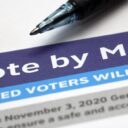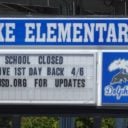

On Easter, we examine public opinion on Jesus and the God of the Christian Bible.
Religiosity may be on a verifiable decline in the U.S., but belief in God and the resurrection of Jesus Christ held steady over the last year to Easter 2017. For more than three years, People’s Pundit Daily has given a brief synopsis of polls relating to faith and religion, which along with an entire chapter in Our Virtuous Republic, continues to support a simple observation.
Americans’ views on God, specifically the tenets of Christianity, are not exactly in line with their views or confidence in the Church.
For instance, in 2014 a whopping 89% of Americans said they believed Jesus Christ actually walked the Earth roughly 2000 years-ago, but only 69% said he rose from the dead. Regarding the latter, that number has actually risen to roughly 75%. While Easter still may not be the most important holiday for Americans, half will still honor the resurrection by attending church.
That number has remained remarkably stable over the last three years.
What are Americans looking for when they attend church services?
According to a new survey conducted by Gallup, 76% of American Christians and Jews filling up churches and synagogues during Easter and Passover are looking for sermons or talks that teach them more about scripture. A similiar 75% are looking for sermons or lectures that help them connect religion to their own life. Sixty-four percent (64%) are looking to attend churches and synagogues that have spiritual programs geared toward children and teenagers.
Among adults who attended church, synagogue or a mosque growing up, but now seldom or never attend, a stunning 36% say a major factor is that they don’t like organized religion. Twenty-five percent (25%) say it’s a minor factor in why they no longer attend. Another 44% say the fact they prefer to worship on their own is a major factor in their decision, and 21% say it’s a minor factor.
A significant percentage–22% as a major factor and 24% as a minor–also say they haven’t found a church or other place of worship that you like. Similarly, they aren’t sure what religion is right for them, 22% and 24% say–respectively.
Put simply, Americans still love God. They just don’t love the institutions that claim to represent him. This is further supported by data reviews in Our Virtuous Republican, showing views on these institutions never recovered following scandals involving well-known evangelists and priest molestation in the Catholic Church.
PPD Battleground State Likely Voter Profiles also showed a slight increase in religiosity among Americans identified as most likely to vote, though it is unclear whether that is due to disproportionate participation or increase in identification.
RASMUSSEN REPORTS SURVEY METHODS
The survey on church attendance for Easter 2017 was conducted on 1,000 American adults during April 11-12, 2017 and has a +/- 3% margin of error, with a 95% level of confidence. The survey on belief in the resurrection was conducted on 1,000 American adults with the same error and confidence.
GALLUP SURVEY METHODS
Results for this Gallup poll are based on telephone interviews conducted March 9-29, 2017, with a random sample of 1,526 adults, aged 18 and older, living in all 50 U.S. states and the District of Columbia. For results based on the total sample of 745 adults who attend church or other house of worship at least monthly, the margin of sampling error is ±4 percentage points at the 95% confidence level. For results based on the total sample of 532 adults who seldom or never attend church, the margin of sampling error is ±5 percentage points at the 95% confidence level. All reported margins of sampling error include computed design effects for weighting.
Each sample of national adults includes a minimum quota of 70% cellphone respondents and 30% landline respondents, with additional minimum quotas by time zone within region. Landline and cellular telephone numbers are selected using random-digit-dial methods.







pud / April 16, 2017
Unsurprising given that america is a nation of imbeciles and lunatics
/